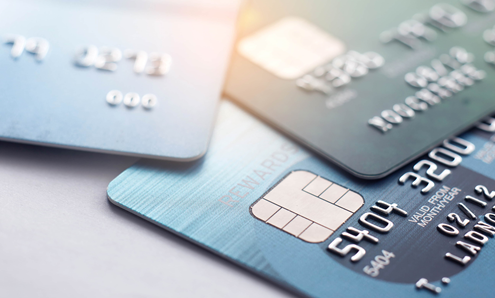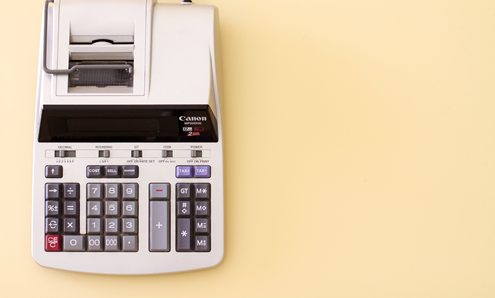What is payment on account? Everything you need to know
20 December 2024 | Published by Jodie Wilkinson
As of 2024, there were 4.29 million self-employed people in the UK, which means that registering and reporting all that extra income via a Self Assessment tax return has never been more crucial.
But, if you’re a small business owner submitting a Self Assessment tax return, knowing where to begin can be confusing if your business is only just finding its feet.
We know that running a small business comes with lots of new challenges, like how to register your company and learning what business rates are. And today, we're going to walk you through another of those things that you'll have to get to grips with. We've compiled all the important bits surrounding payment on account, and we’ll explain how to make them and what happens if you’re late with instalments.
What is payment on account?
Payment on account is tax payments made in advance, twice a year, towards your tax bill if you pay most of your tax through Self Assessment, which is a system that HMRC uses to collect Income Tax. If you’ve earned income that HMRC doesn’t know about, such as profit from a business, this must be reported in a Self Assessment tax return.
HMRC will estimate the total amount of tax you owe for the upcoming year based on your tax bill from the previous year. This will then be split into two instalments, spreading the payments throughout the year.
The deadline for paying Self Assessment tax is by:
- Midnight 31st January
- Midnight 31st July
Who needs to make payments on account?
If you’re a Self Assessment taxpayer, you must make payments on account to HMRC unless:
- Your last tax bill was less than £1,000
- 80% or more of your tax was deducted at source (which means that a sum is deducted from earnings or other payments before they’re made, like PAYE)
This includes:
- Self-employed workers
- Freelancers
- Those who receive income from sources other than employment — Such as rental income, capital gains or dividends
However, there are some exceptions, such as if you’ve already paid more than 80% of your tax liability through PAYE or your total tax bill for the year is less than £1,000. If you’re unsure whether you qualify to make these payments, you should consult a tax professional or contact HM Revenue and Customs directly.
Learn more about PAYE and how to set up payroll for your business here.
How do payments on account work?
If you pay most of your tax through Self Assessment and your bill is more than £1,000, you’ll need to make a payment on account.
The first payment date is midnight on 31 January, as this is before the end of the tax year in question, and the second payment is made on 31 July, after the end of the tax year.
If this is your first Self Assessment, you’ll typically face a tax bill roughly 50% higher than you should be expecting.
This is because, in addition to the 2024/25 tax bill that you would usually have to settle by midnight on 31 January 2026, you’d also need to pay half of the expected tax for the 2025/26 year by 31 January 2026 too.
Then, your second payment on account for the rest of the 2025/26 tax year would be made on 31 July 2026. After this, you’ll have paid all of your owed Self Assessment Tax towards your 2025/26 tax year.
How much needs to be paid towards payment on account?
While HMRC estimates the amount to be paid in each instalment, you can also roughly calculate the amount of tax you owe.
Before paying the first instalment on the 31st January, you’ll need to report your business’s profit and expenses in your annual Self Assessment tax return. By totalling up your income and subtracting any allowable expenses you’ve incurred, it’ll give you an idea as to how much your tax payments could be.
As tax is progressive and increases if you make more profit, you’ll also need to factor in the tax bracket that you fall into. To find out the latest tax brackets and help you work out how much you might need to pay, use our handy sole trader business tax calculator.
What methods of payment are used?
It’s important to make sure that you make payments on time to avoid any penalties or interest charges.
There are four main ways that you can make payments on account in the UK:
- Online — The quickest and easiest way to make a payment on account is through the HMRC website. To do this, you’ll need to log in to your online account and then select the tax you want to pay. From here, it’s simply following the instructions to make the payment. You'll need to have your payment reference number and debit or credit card details to hand to complete the transaction.
- Telephone — If you prefer to make a payment over the phone, you can do so by calling the HMRC payment helpline. Again, you’ll need to have your payment reference number and card information ready. The payment helpline is available from Monday to Friday, 8 AM to 6 PM and is closed on the weekend.
- Bank transfer — You can also make payment by bank transfer. To do this, you’ll need the HMRC’s bank details, which can be found here, and your payment reference number. You should receive a payment reminder letter in the post which details the bank account information for HMRC. When making a bank transfer, it’s important to use the correct payment reference number so HMRC can allocate your payment correctly.
- Cheque — Finally, you can pay by sending a cheque to HMRC. You’ll need to make the cheque payable to ‘HM Revenue and Customs only’ and include your payment reference number.
Is it possible to reduce payment on account?
The total payment on account is based on your tax bill from the previous year. HMRC assumes that you’ll continue to earn at the same rate, so you’ll usually pay close to the same amount of tax for the following year.
You may be able to reduce your payments if you believe your tax liability for the current tax year will be lower than the previous one. This could happen, for example, if your business income has decreased or you’ve made a loss.
How to reduce payment on account
If you’ve worked out how much you think you should be paying, you can submit this following these step-by-step instructions:
- Log into your HMRC services account using your Government Gateway user ID.
- Scroll to the ‘Self Assessment’ box on the homepage.
- Select ‘Amend Self Assessment Return’ from the list.
- Select ‘Tax Return Options’.
- Click ‘Reduce payments on account.’
- Enter the amount you’re suggesting to pay.
- Tick the box from the options list that closely relates to why you’re making the request.
What happens if you overpay?
If you overpay your payments on account, HMRC will refund the excess amount to you. The refund will be made after HMRC has processed your tax return for the relevant tax year.
You can also request a refund of any overpayment by contacting HMRC directly. You’ll need to provide evidence of the overpayment, such as a copy of a bank statement showing any relevant payments.
If you overpay your payment on account but still have outstanding tax liabilities, HMRC will use the excess payment to offset the outstanding liabilities. Any remaining balance will then be refunded to you.
It's important to ensure that you only pay the amount of tax you owe, as overpaying can lead to cash flow problems and delays in receiving a refund. If you need clarification about how much tax you owe or how to make payments on account, contact HMRC directly.
Does HMRC automatically refund overpaid tax?
In most cases, HMRC will automatically refund any overpaid tax. If you’ve overpaid, HMRC will carry out an end-of-year reconciliation after they receive your Self-Assessment tax return, which includes checking whether you’ve under or overpaid for the tax year.
If HMRC determines that you have overpaid, they’ll automatically issue a refund through your original payment method.
It can take several weeks for HMRC to process your tax return and issue a refund, so you may need to be patient. If you’re concerned about the status of your refund, you can check its progress through your online account.
However, there are some instances where HMRC won’t automatically refund you for an overpayment, such as if they believe that this overpayment results from an error or if there are outstanding tax liabilities that need to be paid. In these cases, HMRC may contact you to discuss the situation further and request more information or evidence before issuing a refund.
What happens if you’re late with payments?
Payment on account is not widely known among people who have never been part of the Self Assessment system, which is why it’s important for start-up and small business owners to be aware and get to grips with it. If you expect a tax bill of £20,000, finding an extra £10,000 to cover the first payment can seem impossible.
If you can’t pay, you will likely face interest charges on any outstanding amount. From 26 November 2024, the interest rate for late payments is 7.25% per year, which has risen by nearly 32% from 5.50% in November 2022.
There is no right of appeal against late payment interest.
Get your business set with takepayments
At takepayments, we know what it takes to set up a business. Whether it’s phone payments, other online payment solutions, or card terminals that we can help you with, get in touch with our team of experts on 08082 393254.




